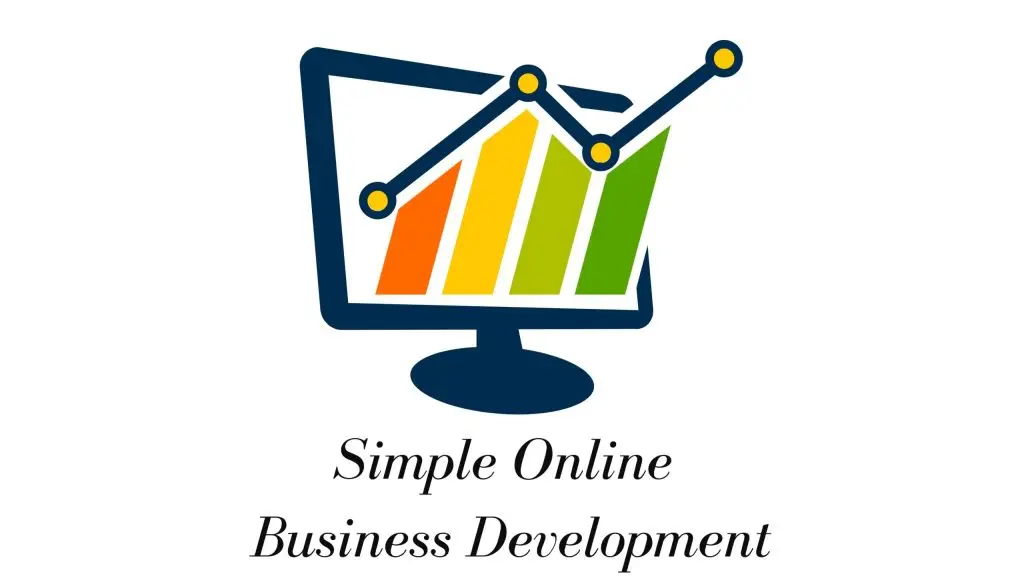Creating a video using only text can be a quick and effective way to share information. Whether you’re making a tutorial, a promotional video, or just want to convey a message, mastering this skill can help you engage your audience. In this guide, we will explore the essential steps to make text-only videos in no time.
Key Takeaways
- Choose the right tools that fit your budget and skill level.
- Plan your content carefully to keep it focused and engaging.
- Use clear and bold text to enhance readability.
- Edit your video to remove unnecessary parts and add visuals.
- Promote your video on social media to reach a wider audience.
Choosing the Right Tools for Text-Only Videos

Creating text-only videos can be a fun and creative process! To get started, you need to pick the right tools that fit your needs. Here’s a breakdown of what you should consider:
Essential Software and Apps
- Canva: Great for beginners, it offers easy-to-use templates for text overlays.
- Adobe Premiere Pro: A professional tool for those looking for advanced features.
- InShot: Perfect for quick edits on your phone, especially for social media.
Budget-Friendly Options
- iMovie: Free for Mac users, it’s user-friendly and perfect for basic editing.
- Lightworks: A powerful free option that works on both Mac and PC.
- Windows Movie Maker: Simple and effective for beginners.
Advanced Tools for Professionals
- Final Cut Pro: Ideal for Mac users who want professional-grade editing.
- DaVinci Resolve: Offers advanced color grading and audio editing features.
- Storykit: Excellent for creating videos with text overlays at scale.
Choosing the right tools can make your video creation process smoother and more enjoyable. Investing time in finding the right software will pay off in the quality of your videos!
Planning Your Video Content
Creating a video is like preparing for a big show. You want everything to be just right! Here are some tips to help you plan your video content effectively:
Outlining Your Main Points
Start by writing down the main ideas you want to share. This keeps your video focused and makes it easier to follow. Here’s a simple way to outline:
- Introduction: What’s the video about?
- Main Points: List the key ideas you want to cover.
- Conclusion: Wrap it up with a strong ending.
Creating a Hook to Grab Attention
Your first few seconds are crucial! You need something that makes viewers want to keep watching. Here are some ideas:
- Ask a question that sparks curiosity.
- Share a surprising fact or statistic.
- Use a short, funny story to connect with your audience.
Storyboarding Your Ideas
Storyboarding helps you visualize your video before filming. It’s like drawing a comic strip of your video! Here’s how to do it:
- Sketch out each scene.
- Write down key actions and dialogues.
- Use it as a guide during filming.
Planning your video content carefully can save you a lot of time and effort in the long run. It helps you stay focused and ensures that your final product aligns with your goals.
By following these steps, you’ll be well on your way to creating a video that not only looks great but also effectively communicates your message!
Filming Techniques for Text-Only Videos
Setting Up Your Filming Space
Creating a great video starts with a good setup. Here are some tips to make your shooting space work for you:
- Choose a quiet location to avoid background noise.
- Use good lighting; natural light is great, but softbox lights can help too.
- Keep your background clean and uncluttered to keep the focus on your subject.
Recording High-Quality Audio
Good audio is just as important as good video. Here’s how to ensure your sound is clear:
- Invest in a decent microphone; it makes a big difference.
- Test your audio levels before you start recording.
- Minimize background noise by closing windows and doors.
Using Multiple Angles
Mixing up your camera angles can make your video more interesting. Here are some tips:
- Mix it up: Use different camera angles to keep your video engaging.
- Close-ups and wide shots: Switch between close-ups and wider shots to show details and context.
- Plan your shots: Think about what angles will best tell your story.
Remember, filming is just the first step. With practice, you’ll get better and your videos will shine! Engaging content is what keeps viewers coming back.
Incorporating these filming techniques will help you create videos that not only look great but also connect with your audience effectively. Don’t forget to focus on your text-based editing in Premiere Pro to enhance your final product!
Editing Your Text-Only Video
Editing is where your video truly comes to life! Here are some key techniques to make your videos shine:
Basic Editing Techniques
- Cutting: Trim unnecessary parts to keep your video engaging.
- Transitions: Use simple transitions to make your video flow smoothly.
- Text Overlays: Add text to highlight key points or provide context.
Adding Graphics and Text
Graphics and text can make your videos more interesting. Here are some tips:
- Add titles and subtitles to help viewers follow along.
- Use bullet points to highlight key information.
- Keep it simple; don’t overcrowd your video with too many elements.
Incorporating Music and Sound Effects
Music can set the mood for your video. Choose background music that fits your content but doesn’t overpower your voice. Here’s how to use sound effectively:
- Pick tunes that enhance your message.
- Use sound effects to emphasize important moments.
- Always check the volume levels to ensure clarity.
Remember, editing can transform your rough footage into a polished video that captures your audience’s attention. By following these tips, you’ll create videos that not only inform but also entertain!
Optimizing Your Text-Only Video for Social Media
Choosing the Right Video Format
When sharing your video on social media, selecting the right format is crucial. Here’s a quick look at popular formats:
| Format | Purpose | Best For |
|---|---|---|
| MP4 | General use | Most videos |
| MOV | High quality | Professional |
| AVI | Large files | Editing |
Compressing Videos Without Losing Quality
To make sure your videos load quickly, follow these tips:
- Use tools like HandBrake or Adobe Media Encoder.
- Aim for a balance between quality and size.
- Test your videos on different devices to ensure they look good everywhere.
SEO Best Practices for Video
Even the best video won’t do much if no one sees it. Here’s how to boost your SEO:
- Use relevant keywords in your video title and description.
- Add tags that relate to your content.
- Create a catchy thumbnail to grab attention.
Remember, optimizing your videos is not just about making them look good; it’s about making them easy to find and share. The more effort you put into optimization, the better your reach will be!
Creating Engaging Visuals with Text
Visuals are a powerful tool to keep your audience engaged. Here are some tips to make your videos pop!
Using Slides and Animations
- Use clear and bold text. Make sure it’s easy to read.
- Keep animations short. They should enhance, not overwhelm.
- Match your slides to your message. This keeps everything cohesive.
Choosing the Right Colors and Styles
- Use colors that match your brand. This helps in crafting compelling video content for diverse audiences.
- Choose styles that are visually appealing and easy to understand.
- Avoid clutter; keep your visuals clean and focused.
Creating Eye-Catching Thumbnails
Your thumbnail is the first thing viewers see, so make it count! Here are some tips:
- Use bright colors and bold text.
- Include a relevant image that represents your video.
- Keep it simple and avoid clutter.
Remember, engaging visuals are like the icing on the cake. They make your content more appealing and help keep your audience’s attention!
Promoting Your Text-Only Video
Getting your video out there is just as important as creating it! Here are some fun ways to share your video:
Sharing on Social Media Platforms
Social media is a powerful tool for spreading the word about your videos. Here are some tips to make the most of it:
- Post it on your Facebook page and encourage friends to share it.
- Use Instagram Stories to tease your video and link back to it.
- Share snippets on Twitter to grab attention.
Remember, the more you share, the more people will see it!
Collaborating with Influencers
Working with influencers can help you reach a wider audience. They can share your video with their followers, which can boost your visibility. Here’s how to do it:
- Find influencers who align with your brand.
- Reach out and propose a collaboration.
- Create content that feels authentic to both your brand and theirs.
Utilizing Paid Advertising
If you want to reach even more people, consider using paid ads. Platforms like Facebook and Instagram offer targeted advertising options. Here’s a quick overview:
| Platform | Ad Type | Targeting Options |
|---|---|---|
| Video Ads | Demographics, Interests | |
| Story Ads | Location, Behaviors | |
| YouTube | Skippable Ads | Keywords, Topics |
Remember, promoting your video is just as important as creating it. Get it out there and watch your audience grow!
Wrapping It Up: Your Video Journey Awaits!
So there you have it! Making videos with just text can be super easy and fun. By using the tips we talked about, you can create videos that not only look great but also grab your audience’s attention. Remember, practice makes perfect, so don’t be afraid to try new things and keep improving. With a little creativity and the right tools, you’ll be making awesome videos in no time. Happy filming!
Frequently Asked Questions
How can I make a video with just text?
You can use video editing software or apps that allow you to add text overlays on images or video clips. Just type your text, choose a font, and position it on the screen.
What tools do I need for creating text-only videos?
You can start with basic tools like iMovie or Windows Movie Maker. For more features, consider advanced software like Adobe Premiere Pro.
How do I make my text stand out in a video?
Use bold fonts, bright colors, and ensure there’s good contrast between the text and background. Keep it simple and avoid clutter.
What is the best way to add music to my video?
Choose background music that fits the mood of your video. Make sure it’s not too loud so viewers can still hear the text or narration.
How can I share my text-only video online?
Upload your video to platforms like YouTube, Instagram, or Facebook. You can also share it via email or on your website.
What should I do if my video isn’t getting views?
Try promoting it on social media, engaging with your audience, and using catchy titles and thumbnails to attract more viewers.








































